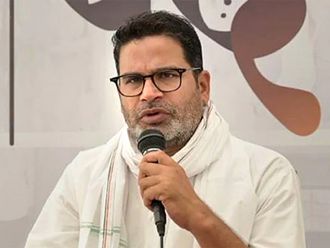
Fifty-six years after Rachel Carson’s ‘Silent Spring’ warned of bird die-offs from pesticides, a new biocrisis may be emerging. A study published last autumn documented a 76 per cent decline in the total seasonal biomass of flying insects netted at 63 locations in Germany over the last three decades. Losses in midsummer, when these insects are most numerous, exceeded 80 per cent.
This alarming discovery, made by mostly amateur naturalists who make up the volunteer-run Entomological Society Krefeld, raised an obvious question: Was this happening elsewhere? Unfortunately, that question is hard to answer because of another problem: a global decline of field naturalists who study these phenomena.
Most scientists today live in cities and have little direct experience with wild plants and animals, and most biology textbooks now focus more on molecules, cells and internal anatomy than on the diversity and habits of species.
It has even become fashionable among some educators to belittle the teaching of natural history and scientific facts that can be “regurgitated” on tests in favour of theoretical concepts.
That attitude may work for armchair physics or mathematics, but it isn’t enough for understanding complex organisms and ecosystems in the real world. Computer models and equations are of little use without details from the field to test them against.
Are we in the midst of a global insect Armageddon that most of us fail to notice? Here’s another data point: A decades-long decline in plant-pollinating hawk moths has been reported in the US Northeast, but its causes and consequences are uncertain because we know so little about the ecology of these insects. In days past, compiling such information would have made a respectable life’s work for a Linnaeus, Humboldt or Darwin. Now such creatures are often ignored because studying them seems unlikely to generate publications, headlines or grants that provide academics with tenure and prestige.
This leaves us with little more than anecdotal evidence to work with. A recent story in ‘The Telegraph’ noted that automobile windscreens in Britain are no longer heavily caked with splattered insects. It reminded me of the tiny wings, legs and antennas that used to smear the front of my car after midsummer drives during the 1970s. Nowadays, a drive through northern New York, where I live, yields barely a blemish. Is it because cars are more streamlined? Not likely. Last July, I examined parked vehicles in Saranac Lake and found little or no bug debris, even on licence plates or the blunt fronts of vans.
What’s behind the decline? Probably not climate change, according to the researchers in the German study who also monitored local weather during the survey. What about collisions with vehicles? Despite my experience and the dashboard observations in Britain, one study published in 2015 estimated that hundreds of billions of insects are being killed in North America by cars and trucks every year. The study’s authors called for additional research to determine whether what they found is “contributing to the substantial declines of pollinating insects occurring on a global scale, thus putting the ecological functioning of natural areas and agricultural productivity in jeopardy”.
Cars were probably not the culprit in the German study, though, because it focused on nature reserves where road carnage is minimal. For some experts, the process of elimination leaves pesticides among the likely suspects.
Why care about this new silence of the bugs? An across-the-board decline in flying insects, if true, means that an entire sector of the animal kingdom is in trouble, representing an immense diversity of life forms, from butterflies and beetles to hoverflies and damselflies. The eminent biologist Edward O. Wilson, who has spent much of his life studying ants, has warned: “If all mankind were to disappear, the world would regenerate back to the rich state of equilibrium that existed 10,000 years ago. If insects were to vanish, the environment would collapse into chaos.”
So there it is. Could it be that whatever might be causing these insect deaths could be a threat to us too?
The widely reported decline of honeybees in the US pales in comparison with the drop-off of bugs in Germany, if not in scale, then in the loss of biodiversity. Insects represent the vast majority of all animal species. Because they are pollinators and a vital part of the food chain, their absence would strike deep at the roots of life on earth.
I’m a lake scientist, and I and colleagues have been struggling to explain our own mystery: a restructuring of plankton communities in lakes worldwide in recent decades, which we’ve documented by examining sediment cores extracted from lake bottoms. This could signal problems for water quality, fisheries or other aspects of lake ecology. Had we not taken the core samples, the geographic scale of this change might remain undetected, because funding and rigorous field monitoring of plankton composition in lakes has often been lacking.
Some experts have attributed the plankton shift to climate change, others to nitrogen pollution from agricultural runoff, but we need more long-term field studies to confirm the cause and anticipate its effects. The German insect data suggest another possibility. Could agricultural chemicals be poisoning aquatic organisms, including plankton and insects that begin their lives as aquatic larvae? We simply don’t know.
Scientist-directed crowdsourcing
In Britain, the news report about car-insect collisions was based on a study that relied on data from volunteers who monitored gridlike “splat-o-meters” on their licence plates. We need more of this sort of scientist-directed crowdsourcing. Citizen scientists and a few field-research-oriented college communities like my own at Paul Smith’s College in the Adirondacks of New York are turning their yards, gardens, lakes and forests into long-term monitoring stations. Online clearing houses such as iNaturalist, Budburst and the North American Breeding Bird Survey compile and archive field data for others to use, and show that many species are changing their ranges and migration habits in response to climate change.
In the US, research scientists associated with a network of more than two dozen long-term ecological monitoring centres have also been conducting more detailed field research for several decades.
But these efforts are still not enough to keep track of a rapidly changing world. We need new crops of professionals trained in field biology and ecology to focus on important but less charismatic or commercially valued creatures than songbirds and honeybees.
In 1996, an editorial in ‘Conservation Biology’ warned that “naturalists are dying off”, and asked: “Will the next generation of conservation biologists be nothing but a bunch of computer nerds with no first-hand knowledge of natural history?”
Two decades later, we are beginning to realise how lucky we are that dedicated expert and amateur naturalists remain to observe and record the distinctive flash of a firefly or the soft clatter of dragonfly wings. But we need more of them, and soon.
— New York Times News Service
Curt Stager is an author, radio co-host, musician, and professor of natural sciences at Paul Smith’s College, New York.










